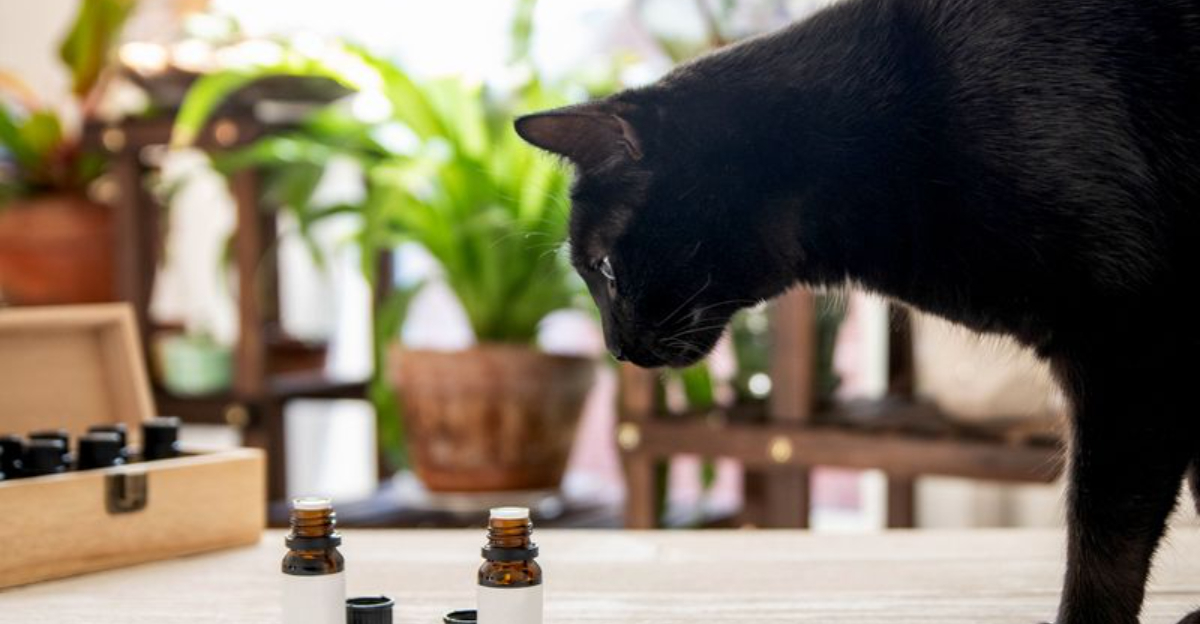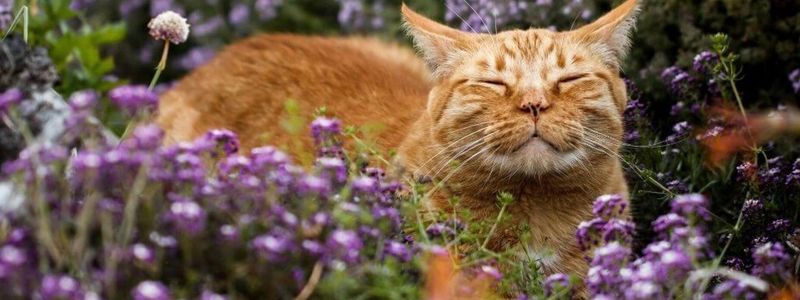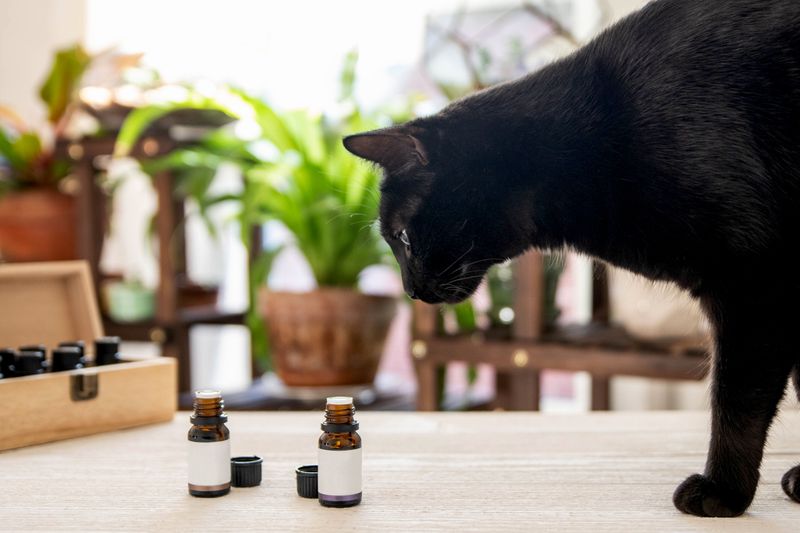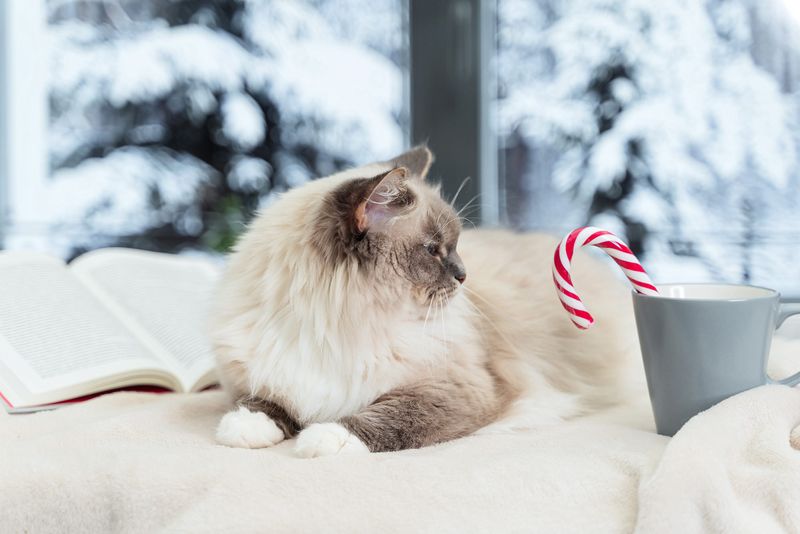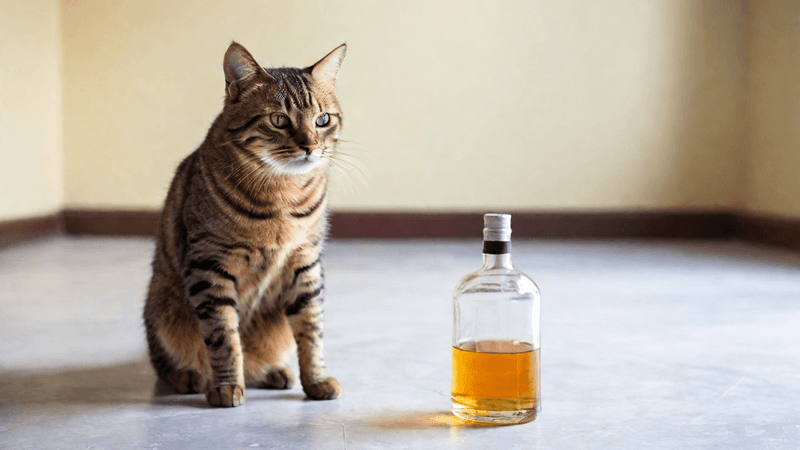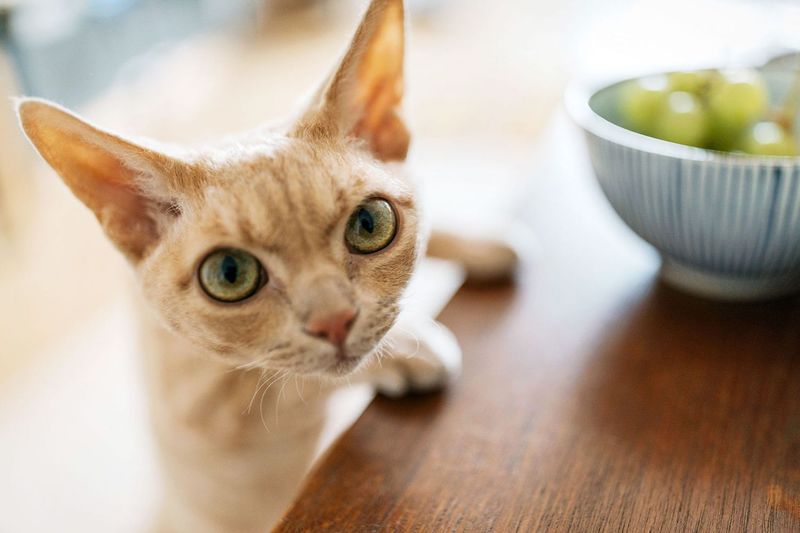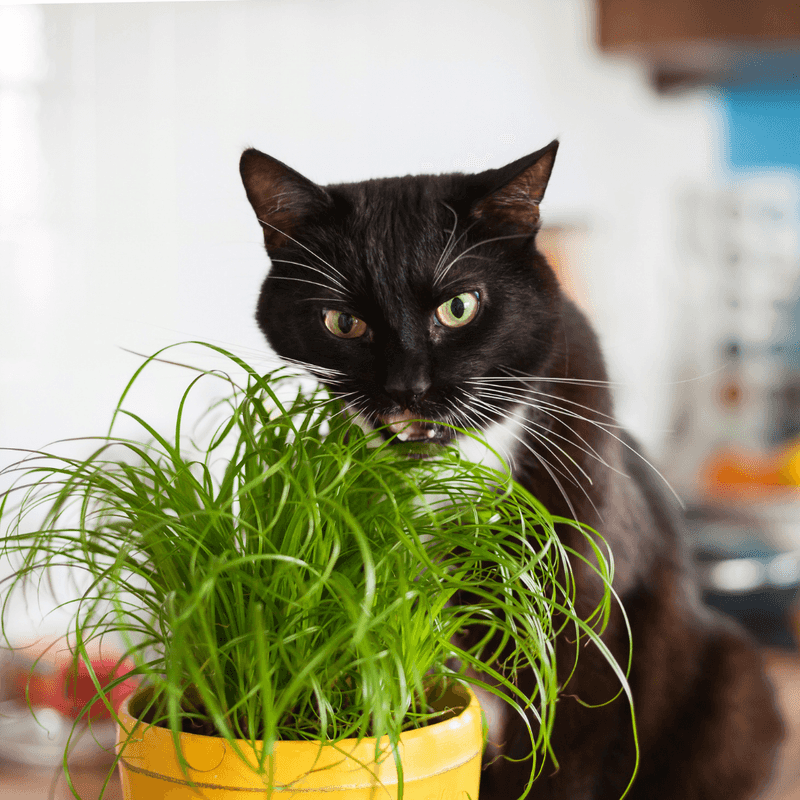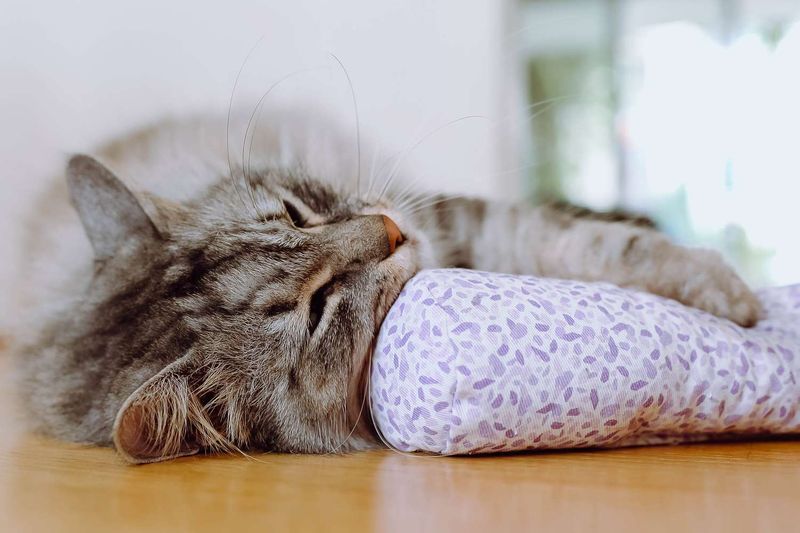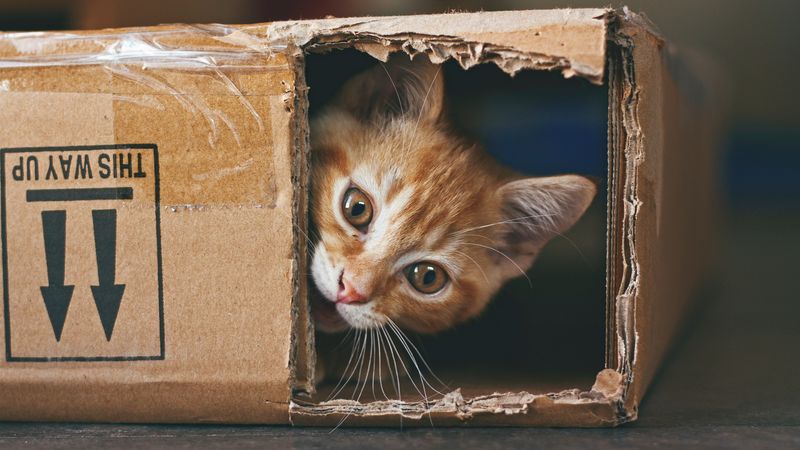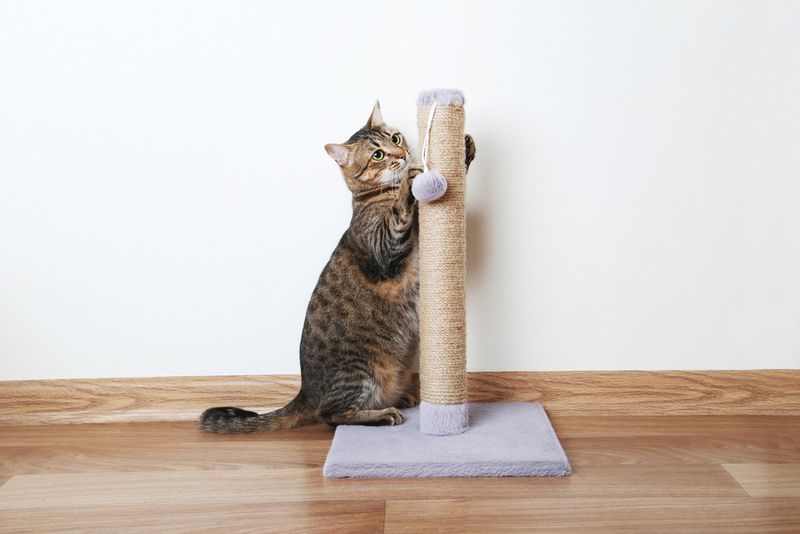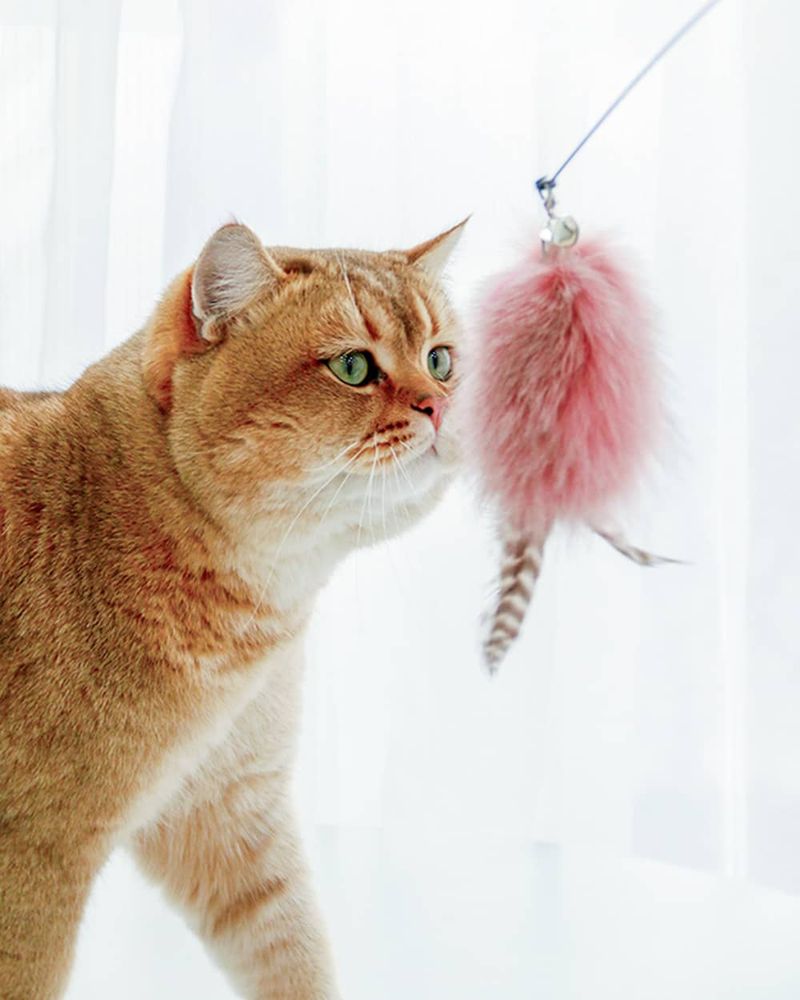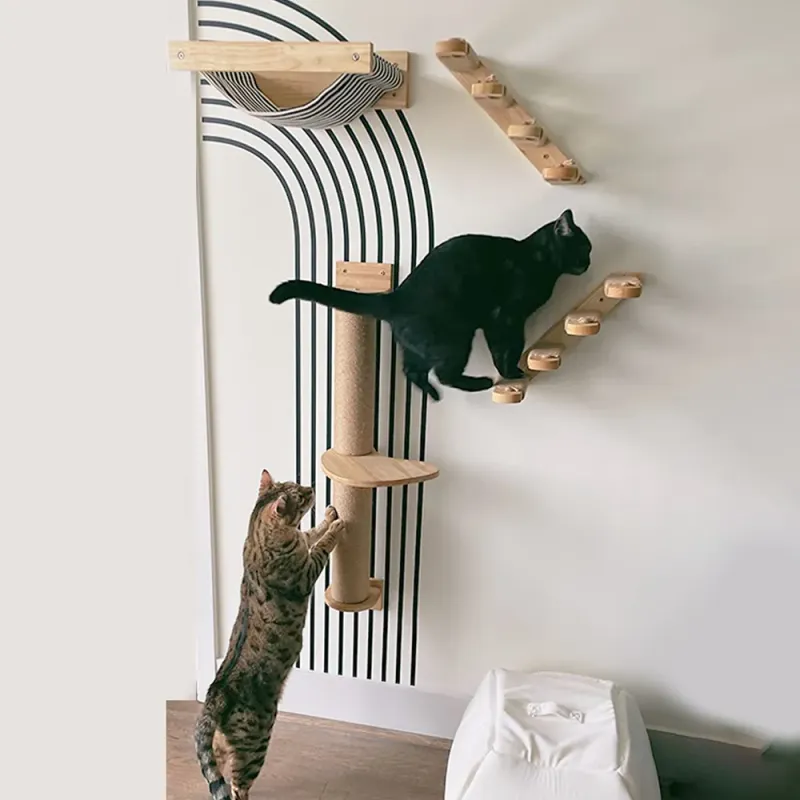📖 Table of Content:
- 1. Chocolate
- 2. Lilies
- 3. Essential Oils
- 4. Onions and Garlic
- 5. Xylitol Gum and Candy
- 6. Alcohol
- 7. Grapes and Raisins
- 8. Acetaminophen (Tylenol)
- 1. Cat Grass
- 2. Catnip Toys
- 3. Cardboard Boxes
- 4. Interactive Puzzle Feeders
- 5. Scratching Posts
- 6. Feather Wand Toys
- 7. Cat Trees
- 8. Treat-Dispensing Balls
Every curious cat sees the home as a playground full of scents, textures, and new discoveries. With agile paws and sharp instincts, they often investigate everything within reach. This natural curiosity, though endearing, can sometimes lead them into danger.
Many everyday household items, while harmless to humans, can pose serious risks to feline health. From toxic plants to seemingly innocent cords and cleaners, certain objects can cause harm if left accessible. Recognizing these hazards is key to preventing accidents before they happen.
Fortunately, not everything around the house is a threat. Some items can actually support a cat’s mental stimulation, comfort, and overall well-being. Offering safe alternatives ensures that curiosity is met with enrichment rather than risk.
1. Chocolate
That sweet treat you crave after dinner could spell disaster for your feline friend. Chocolate contains theobromine and caffeine, both toxic compounds that cats cannot metabolize effectively.
Dark chocolate and baking chocolate pack the highest concentrations of these dangerous substances. Even small amounts can cause vomiting, diarrhea, increased heart rate, and seizures in cats.
Keep all chocolate products securely stored in cabinets or containers your cat cannot access. Remember that chocolate toxicity is cumulative, meaning repeated small exposures can build up to dangerous levels over time.
2. Lilies
Beautiful as they are, lilies rank among the most lethal plants for cats. Every part of these flowers – petals, leaves, stems, and even pollen – contains compounds that cause rapid kidney failure.
Easter lilies, tiger lilies, and Asiatic varieties pose the greatest threat. Just brushing against the pollen and then grooming can trigger severe poisoning within hours.
Symptoms include vomiting, loss of appetite, and lethargy, progressing quickly to kidney shutdown. If you suspect lily exposure, seek emergency veterinary care immediately. Consider cat-safe alternatives like roses or sunflowers for your floral arrangements instead.
3. Essential Oils
Those relaxing aromatherapy sessions might be stressing out your cat more than you realize. Cats lack specific liver enzymes needed to process essential oils, making them highly susceptible to poisoning.
Tea tree, eucalyptus, peppermint, and citrus oils are particularly dangerous. Diffusers spread these compounds through the air, while topical applications can absorb through skin contact.
Signs of essential oil toxicity include drooling, difficulty breathing, tremors, and liver damage. Store oils in secure locations and avoid using diffusers in rooms where your cat spends time. Natural alternatives like opening windows for fresh air work just as well.
4. Onions and Garlic
Cooking with these flavorful ingredients adds zest to your meals but poses serious risks to your cat’s health. Onions and garlic contain compounds called thiosulfates that damage red blood cells in felines.
Both fresh and cooked forms are dangerous, including powdered seasonings and baby food containing these ingredients. The damage accumulates over time, potentially leading to anemia even from small repeated exposures.
Watch for pale gums, weakness, rapid breathing, and orange-colored urine as warning signs. Keep all allium family plants, including chives and leeks, away from curious cats. Always check ingredient labels on human foods before sharing with your pet.
5. Xylitol Gum and Candy
Sugar-free doesn’t mean cat-safe when it comes to products containing xylitol. This artificial sweetener causes rapid insulin release in cats, leading to dangerous drops in blood sugar levels.
Gum, breath mints, diet foods, and some medications contain this deadly ingredient. Even tiny amounts can trigger hypoglycemia within minutes of consumption, causing weakness, loss of coordination, and collapse.
Severe cases progress to liver failure and death without immediate treatment. Store all sugar-free products in sealed containers well out of reach. Check labels carefully, as xylitol appears in unexpected items like vitamins, toothpaste, and baked goods marketed as healthy alternatives.
6. Alcohol
Party leftovers pose unexpected dangers when curious cats investigate abandoned drinks. Alcohol affects cats much more severely than humans due to their smaller size and different metabolism.
Wine, beer, spirits, and even foods cooked with alcohol can cause poisoning. Cats may be attracted to sweet cocktails or creamy liqueurs, making accidental ingestion more likely during gatherings.
Symptoms range from vomiting and diarrhea to difficulty breathing, coma, and death. Never leave alcoholic beverages unattended where cats can access them. Clean up spills immediately and dispose of empty containers properly to prevent your feline from licking residue.
7. Grapes and Raisins
These healthy human snacks hide a mysterious toxin that can destroy your cat’s kidneys. Scientists haven’t identified the exact compound responsible, but both grapes and raisins consistently cause severe reactions in felines.
Fresh, dried, or cooked forms all pose equal danger. Some cats show sensitivity to even single grapes, while others may consume larger amounts before showing symptoms.
Early signs include vomiting within hours of consumption, followed by kidney failure within days. The unpredictable nature of grape toxicity makes any exposure a veterinary emergency. Keep fruit bowls elevated and check ingredients in cereals, breads, and trail mixes that might contain these dangerous fruits.
8. Acetaminophen (Tylenol)
Human pain relievers can be deadly pain causers for cats. Acetaminophen overwhelms feline liver enzymes, causing rapid organ failure and oxygen deprivation throughout the body.
Cats cannot break down this common medication like humans do. Even child-safe doses prove lethal to adult cats, with symptoms appearing within hours of ingestion.
Brown gums, difficulty breathing, swelling, and collapse signal acetaminophen poisoning. Store all medications in childproof containers placed high above cat reach. Never give human pain relievers to cats, even in emergency situations. Contact your veterinarian for cat-appropriate pain management options instead of raiding your medicine cabinet.
1. Cat Grass
Fresh cat grass transforms any windowsill into a feline salad bar that actually benefits your pet’s health. This specially grown wheatgrass provides essential nutrients and fiber that support healthy digestion.
Cats instinctively seek out grass to help eliminate hairballs and add vitamins to their diet. Growing your own ensures a pesticide-free, safe option compared to unknown outdoor plants.
Regular munching on cat grass can reduce your pet’s interest in potentially harmful houseplants. The grass grows quickly from seed and provides ongoing entertainment as cats enjoy nibbling, batting, and rolling in their personal garden. Replace the pot every few weeks to maintain freshness and prevent mold growth.
2. Catnip Toys
Catnip toys unlock pure joy in most cats through a completely safe and natural high. The herb triggers a euphoric response that encourages exercise, play, and stress relief for indoor felines.
About 70% of cats inherit the genetic sensitivity to nepetalactone, the active compound in catnip. Those who respond will roll, purr, and act silly for 10-15 minutes before the effect wears off.
Rotating catnip toys keeps the experience special and prevents habituation. Store unused toys in sealed containers to preserve potency. Even cats who don’t react to catnip can enjoy the textures and shapes of these toys for batting and carrying around the house.
3. Cardboard Boxes
Amazon deliveries bring double excitement when you realize cats consider cardboard boxes the ultimate luxury item. These simple containers provide security, entertainment, and comfort without any safety concerns.
Boxes satisfy cats’ natural instincts to hide, hunt, and survey their territory from elevated positions. The enclosed space helps reduce stress and provides a cozy retreat from household activity.
Different-sized boxes offer varied experiences – small ones for snug hiding, large ones for exploration and play. Cut holes in the sides to create interactive tunnels and peek-a-boo games. Replace boxes when they become worn or damaged to maintain structural integrity and prevent ingestion of loose pieces.
4. Interactive Puzzle Feeders
Mealtime becomes brain training when you swap regular bowls for puzzle feeders designed to challenge your cat’s problem-solving skills. These devices slow down eating while providing mental stimulation that indoor cats desperately need.
Various designs require different techniques – rolling balls to release kibble, pawing at sliding pieces, or fishing treats from holes. This mimics natural hunting behaviors that keep cats mentally sharp.
Slower eating reduces vomiting and improves digestion, especially beneficial for cats who gulp their food. Start with easier puzzles and gradually increase difficulty as your cat masters each level. The combination of food motivation and mental challenge creates a rewarding experience that fights boredom.
5. Scratching Posts
Scratching posts save your furniture while supporting your cat’s physical and emotional well-being. These essential items allow cats to maintain healthy claws, stretch muscles, and mark territory through natural behaviors.
Different materials like sisal, carpet, or wood appeal to individual preferences. Vertical posts should be tall enough for full-body stretching, while horizontal options provide variety for different scratching styles.
Place posts near sleeping areas and entrances where cats naturally want to stretch and mark. Multiple posts throughout the house accommodate multi-cat households and provide convenient options wherever your cat feels the urge. Reward scratching post use with treats to reinforce this appropriate behavior over furniture destruction.
6. Feather Wand Toys
Feather wands transform lazy house cats into athletic hunters through interactive play that satisfies their predatory instincts. The unpredictable movement of feathers triggers chase responses that provide excellent exercise and mental stimulation.
These toys strengthen the human-cat bond through shared play sessions while helping cats burn excess energy. Regular wand play reduces behavioral problems caused by boredom and pent-up hunting drive.
Always supervise wand play and store toys safely when finished to prevent cats from chewing strings or swallowing small parts. Vary the movement patterns – quick darts, slow stalks, and sudden stops keep cats engaged and challenged. Replace worn feathers promptly to maintain safety and interest.
7. Cat Trees
Cat trees create vertical territories that satisfy felines’ natural desire to climb, perch, and survey their domain from high vantage points. These multi-level structures provide exercise, entertainment, and personal space all in one piece of furniture.
Different levels accommodate multiple cats while reducing territorial conflicts. Hiding spots, scratching surfaces, and dangling toys add variety to keep cats engaged throughout the day.
Sturdy construction prevents tipping accidents that could injure cats or damage property. Place trees near windows to combine climbing fun with bird watching entertainment. Choose appropriate sizes for your space and cats – larger breeds need wider platforms and stronger support than smaller cats require.
8. Treat-Dispensing Balls
Rolling treat balls turn snack time into an engaging game that combines physical activity with food rewards. These simple devices encourage cats to work for their treats, mimicking natural foraging behaviors.
Adjustable openings control difficulty levels and treat flow rates. Cats quickly learn that batting, pushing, and chasing the ball results in tasty rewards, creating positive associations with exercise.
Perfect for solo play when owners are busy, these balls help prevent overeating by slowing down treat consumption. The unpredictable rolling pattern keeps cats guessing and engaged longer than stationary treat dispensers. Choose appropriate sizes to prevent choking hazards and ensure treats fit properly through dispensing holes without getting stuck.
